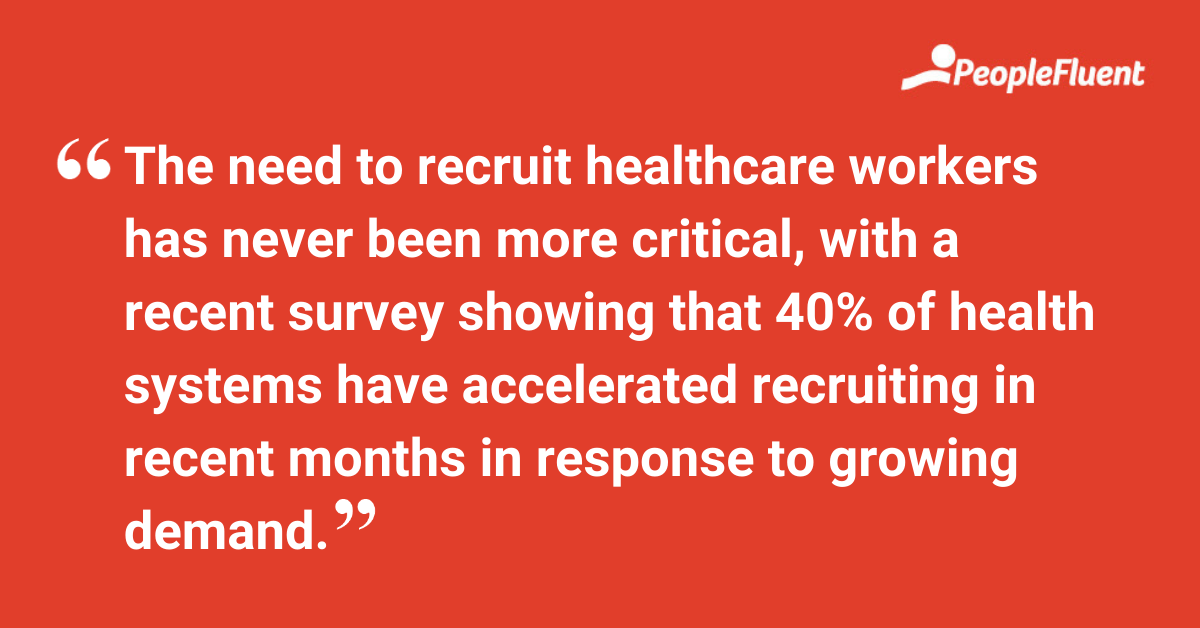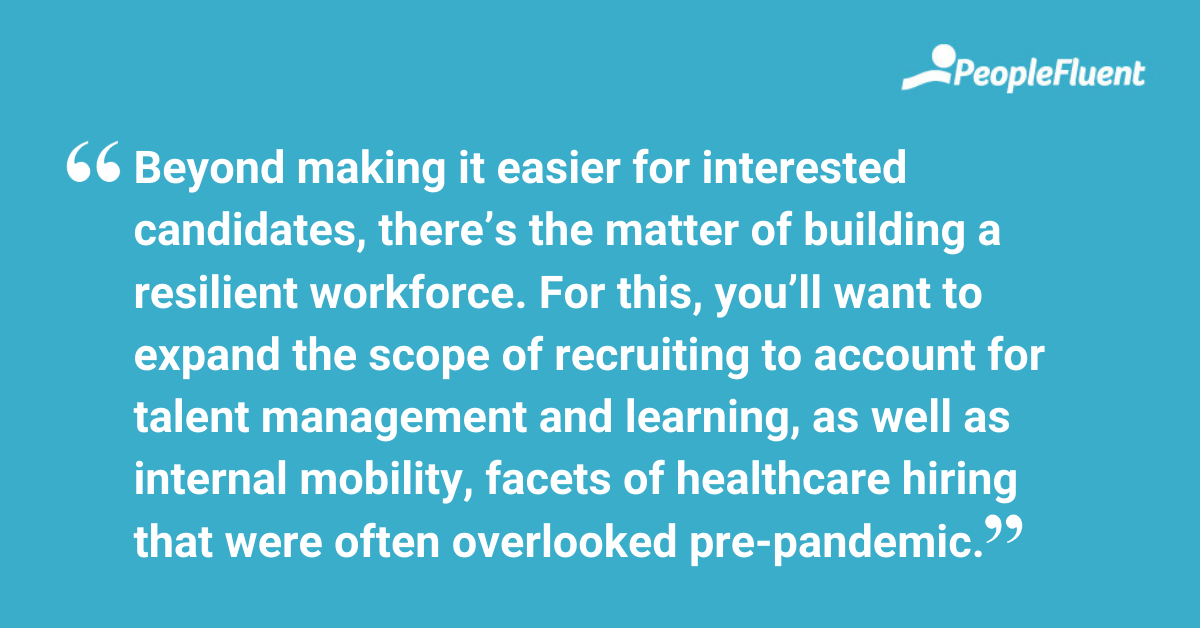Published: Sep 20, 2021Time to read: 5mins Category: Insights
Reopening, Rehiring, Reconsidering: What’s Next for Hiring in Healthcare
When it comes to hiring healthcare workers, does your strategy need a shot in the arm? The pandemic has totally changed our reliance on healthcare workers and everyone is feeling the pinch. These days, recruiting staff for hospitals, clinics, and labs is becoming a life-changing (and life-saving!) imperative. Here’s what you need to know.
Healthcare workers have been through a lot over the last year and a half. As one of few sectors to keep working throughout the pandemic, the healthcare sector quickly found itself thrust onto the frontlines of a worldwide crisis seemingly overnight.
Healthcare has long been a challenging field to work in—not to mention hire for—marked by long hours, staff shortages, high burnout rates, and changing requirements. So, it’s no surprise that after a sustained period of helping navigate the pandemic situation, we’re seeing many of these workers look for new opportunities as part of the “Great Resignation.”
Continued shortages and voluntary turnover have real consequences on the level of care received, organizational operations, and ultimately, this workforce. The state of healthcare hiring has become so complicated that a statement from the Federation of American Hospitals indicated, “To deny the headwinds we are facing with staffing reflects a regrettable lack of understanding of the unimaginable stresses the COVID-19 pandemic continues to place on caregivers, hospitals, and the patients that depend on us.” Still, the need to recruit these workers has never been more critical, with a recent survey showing that 40% of health systems have accelerated recruiting in recent months in response to growing demand.
YOU MIGHT ALSO LIKE | ‘3 Creative Ways to Reduce Healthcare Employee Burnout’

Given that much has happened in a relatively short period of time and healthcare hiring looks different than it did a few years ago, recruiting teams need to adjust their approach. Here’s what to consider...
Hiring for Healthcare: Now and Then
For starters, this is a broad field, with healthcare occupations ranging from support roles like home health aides, occupational therapy assistants, and medical transcriptionists to practitioner positions such as nurses, physicians, and dental hygienists.
On top of the inherent day-to-day challenges, the training and specializations required to secure this type of employment puts limits on the available talent pool. In Texas alone, that meant there were 23,000 more unfilled jobs for registered nurses than there were nurses looking to fill them.
Noting the impact that workforce constraints have on operations, research from McKinsey indicates that many healthcare systems are responding to the challenge by implementing new tactics, which include wage increases, recruitment increases, one-time bonuses, cross-skilling, and upskilling nurses and support staff, flexible schedule implementation, and non-monetary incentives. As such, attraction and retention become equally important in the talent acquisition lifecycle, with the ability to source candidates being only one part of an increasingly complicated equation.
To compete in the current market as well as in the future, healthcare recruiters need the right mix of strategies and solutions, which requires, as McKinsey puts it, “managing short-term, pandemic-era workforce challenges while sowing seeds for longer-term changes that enhance workforce and patient experience.”
KEEP READING | ‘How to Implement an ATS: 13 Things to Accelerate ROI’

Telehealth vs Hands-On Care: Where Are Workers Actually Needed?
While telehealth is an option in some situations, healthcare remains primarily hands-on, and from working through the pandemic, there’s been a shift in expectations on the part of these workers. Improved health and safety measures along with better compensation and expanded benefits like tuition reimbursement, no-cost healthcare, and cash-out vacation policies may top the wish list for those actively seeking new roles
But checking boxes will only help get more candidates into your ATS. To improve outcomes, you will also need to streamline the recruiting process from application to onboarding, accommodating the busy schedules and mobile nature of healthcare workers, who spend the majority of their day on their feet.
Beyond making it easier for interested candidates, there’s the matter of building a resilient workforce. For this, you’ll want to expand the scope of recruiting to account for talent management and learning, as well as internal mobility, facets of healthcare hiring that were often overlooked pre-pandemic.
HANDPICKED FOR YOU | ‘Hiring From Within: How To Create a Culture of Internal Mobility’

Coping With Burnout
Part of what’s happened in healthcare, compounded by the burnout many workers are grappling with, is what Deloitte calls a “negative talent cycle.” As they explain it, “Because there are no career planning and learning programs, employees don’t have the skills to be considered for promotion—and there’s no internal mobility. Because there’s no internal mobility, the very best employees keep leaving, hurting the organization’s brand in the career market. And the cycle begins again.”
To create a positive cycle and address the limitations on the current healthcare workforce, employers will want to introduce online opportunities for training and learning that reinforce organizational culture and advance career development.
With healthcare workers putting their lives on the line for patients, it’s about meeting employees—and job seekers—where they are, simplifying processes, delivering materials in a manageable format, and showing care and compassion to those doing the same for others.
KEEP READING | ‘The 5 Most Important Skills for Healthcare Leaders’
Futureproof Your Hiring Process
Need help modernizing your hiring efforts? Attract the right people at the right time with our short guide, ‘6 Strategies for Attracting Top Talent’. Alternatively, reach out—we would love to help!